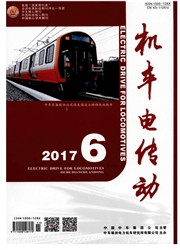

 中文摘要:
中文摘要:
针对摩擦式车钩受压偏转行为,分析了重载机车二系横向止挡纵向间距对车钩偏转角的关系,通过建立由2台8轴重载机车、1台虚拟货车与4组缓冲器具有迟滞特性的摩擦式钩缓系统组成的列车动力学模型,研究了制动条件下机车二系横向止挡纵向间距对车钩稳定性能与列车运行安全性能的影响规律。计算结果表明:二系横向止挡纵向间距对车钩受压稳定性能及列车运行安全性有重要影响。在500 kN压钩力作用下,当二系横向止挡纵向间距为10 m时,车钩最大偏转角和车体横向错位分别为10°和60 mm,列车安全性指标超出安全限值;当二系横向止挡纵向间距增加至14 m时,车钩最大偏转角和车体横向错位分别减少了70%和67%,列车安全性指标远低于安全限值。在机车设计中,应该适当地增加二系横向止挡纵向间距提高制动条件下列车安全运行性能。
 英文摘要:
英文摘要:
Focusing on the friction-type coupler rotation behavior under compressive forces, the relationship between the longitudinal distance of secondary lateral stoppers of heavy haul locomotives and the coupler rotation angle was analyzed. A train dynamic model, including two sets of eight-axle heavy haul locomotives, a dummy freight vehicle and four friction-type coupler and draft gear systems with hysteretic characteristics, was built to study the effect of the longitudinal distance of secondary lateral stoppers on the coupler compressive stability capacity and the running safety of trains under braking condition. Numerical results indicated that the longitudinal distance of secondary lateral stoppers had an important influence on the Coupler compressive stability capacity and the running safety of trains. Under 500 kN coupler compressive forces, the maximum coupler rotation angle and carbody lateral displacement were respectively 10~ and 60 mm, and the train safety index exceeded the safety limit value when the longitudinal distance of secondary lateral stoppers was set to 10 m. When the longitudinal distance of secondary lateral stoppers was increased to 14 m, the maximum coupler rotation angle and carbody lateral displacement were reduced by 70% and 67%, respectively. The train safety index was much smaller than the safety limit value. During the design stage of heavy haul locomotives, the longitudinal distance of secondary lateral stoppers should be appropriately increased in order to improve the running safety of trains under braking condition.
 同期刊论文项目
同期刊论文项目
 同项目期刊论文
同项目期刊论文
 期刊信息
期刊信息
